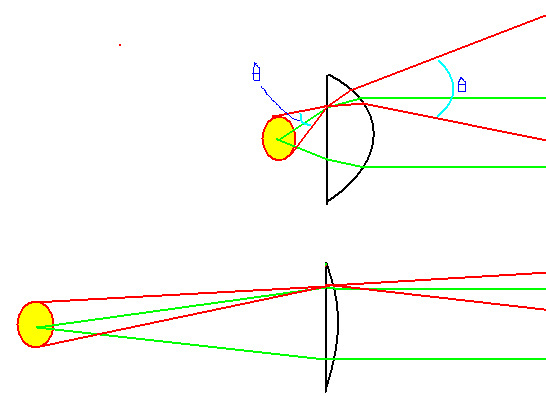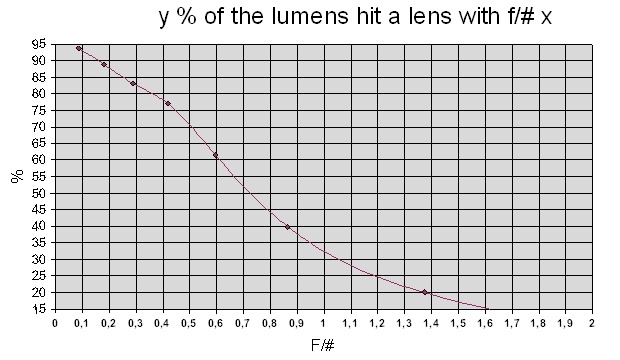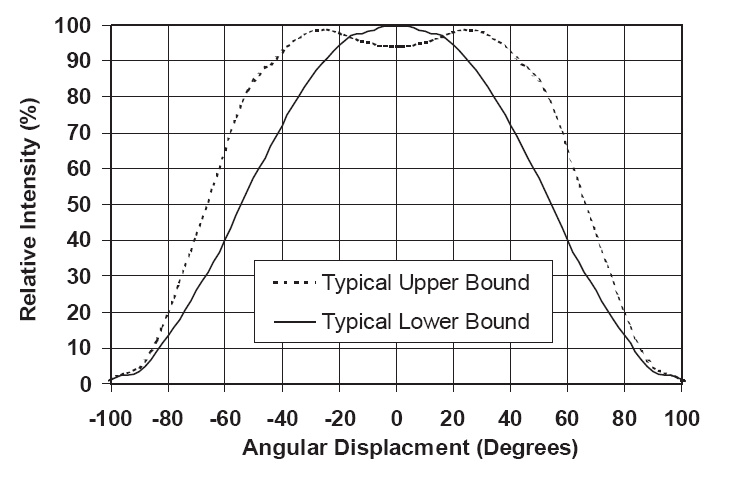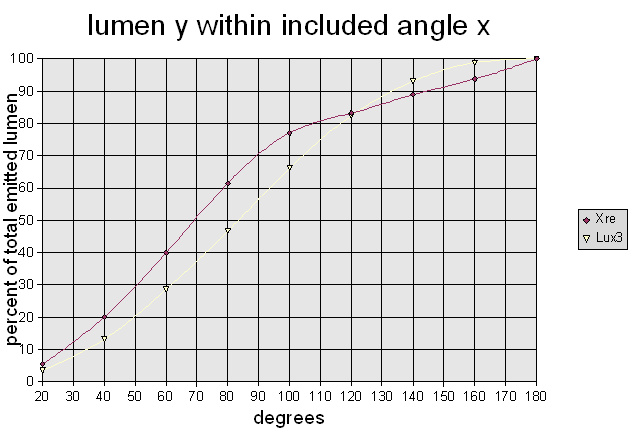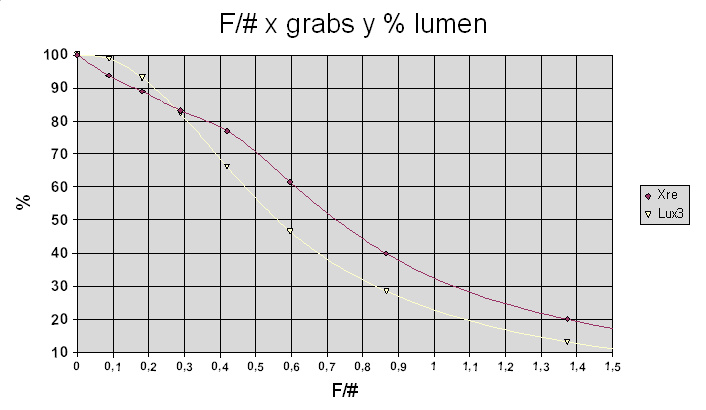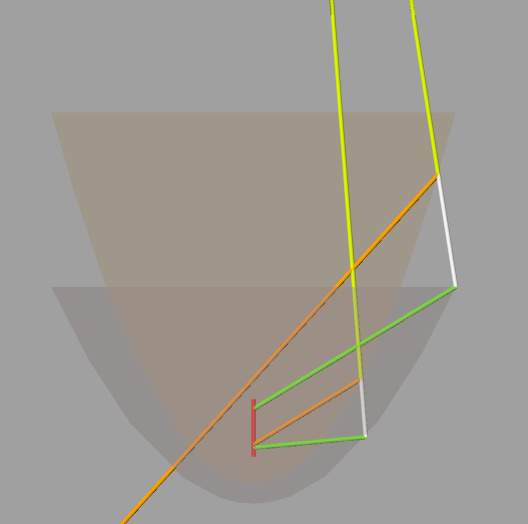That is what I meant with "This will be the hard part of this post !"
On these forums there is a lot of confusion and mis understanding about what determines the throw of a light !
But there is hope: Take a good look at the last picture AilSnail posted:
Now concentrate only on the green beams: That beam, comming out of the lens, towards the object is exactly the same with both lenses !!
That means that the center of each beam has exactly the same amount of light (lux at 1m), This also means: THE THROW OF THE CENTER BEAM IS THE SAME WITH BOTH LENSES !! And that is that I've been trying to tell you..
For the entire beam, I hope the earlier posts were clear enough about that: If the lens "sees" a larger surface, it projects a larger surface, but if the lens diameter stayes the same, the surface brightness at the object stayes the same!
So, back to the pic AilSnail posted: The lens with the short focus projects a bigger spot at a sertain distance compared to the lens with the longer focal length. But in the middle of both spots the lux-reading will be the same, so they'll have the same throw.
Now what happens is: The lens with the short focal length grabes much more lumens from the emitter, thats why the beam is wider. Now if you illuminate an object with this wider beam objects in the neighborhood light up as well by the wider beam, That is the main reason the narrow beam seems to throw further: You have a clearer wiew to the object, not disturbed by illuminated objects nearby !!
AilSnail,, Try to do the same experiment, but now measuring the lux at a distance of about 10 metres, at the center of each beam. The brightness of a illuminated object is directly related to the amount of lux it receives, so the amount of lux you measure at a distance is directly related to throw !!
Hope this helps you to understand..
Regards,
Ra.


